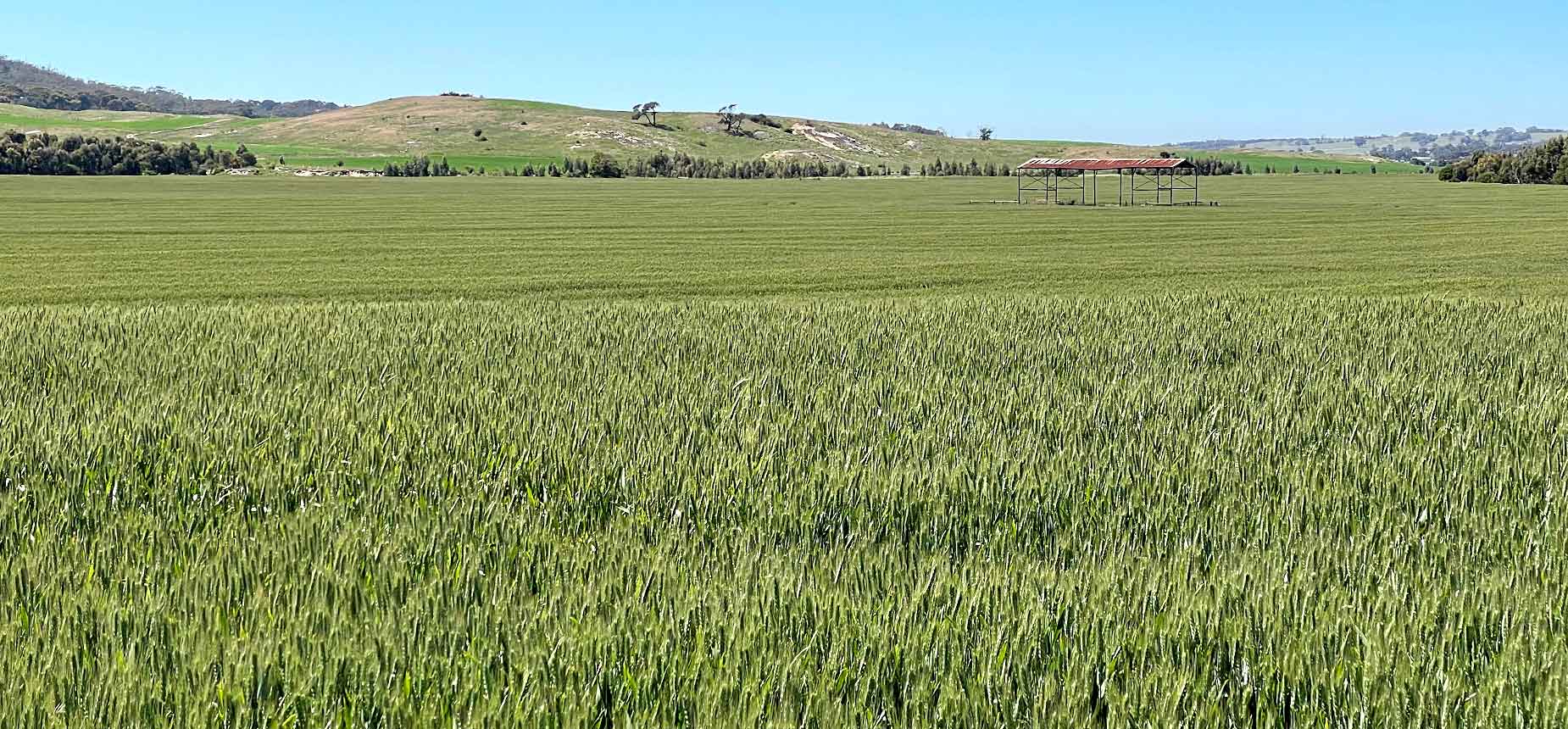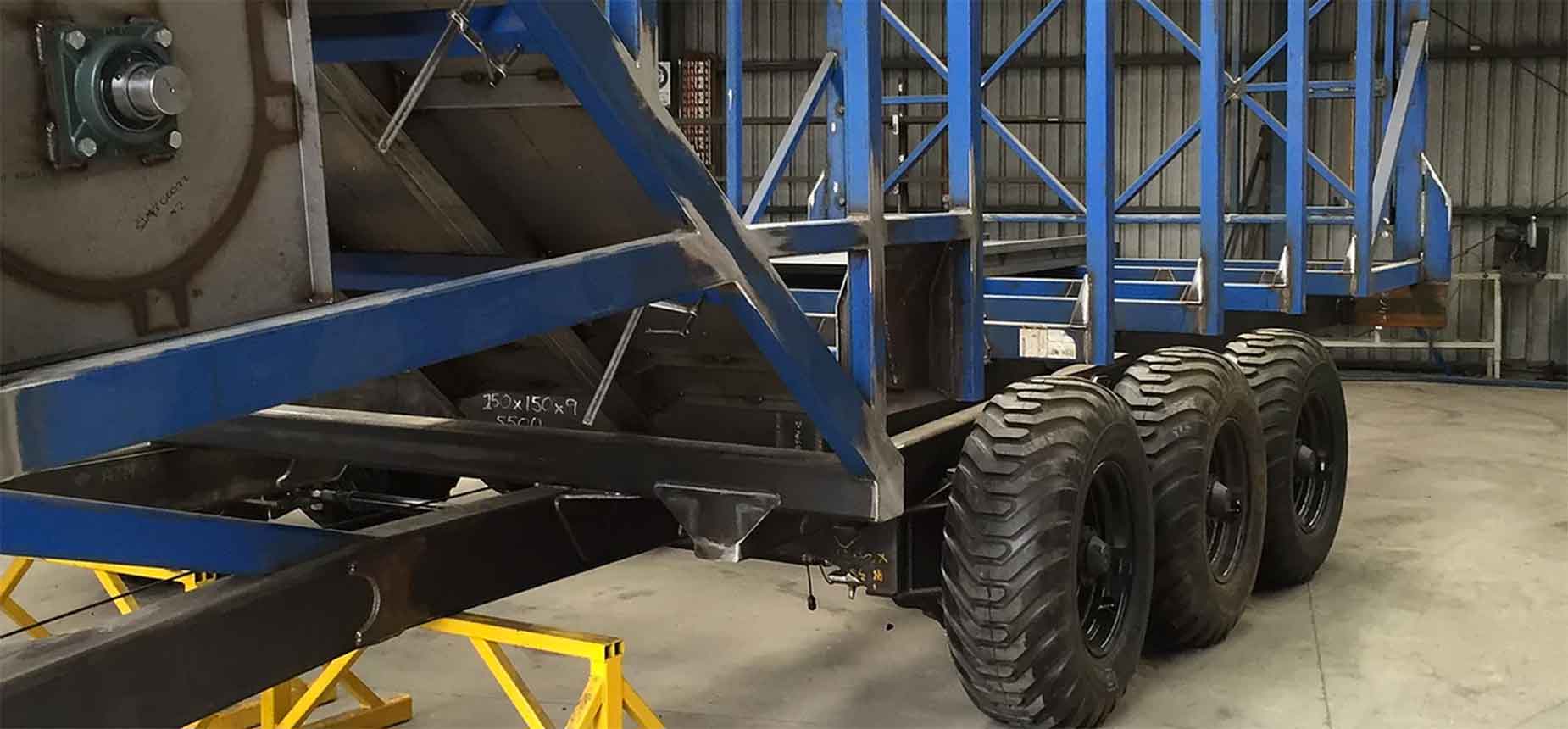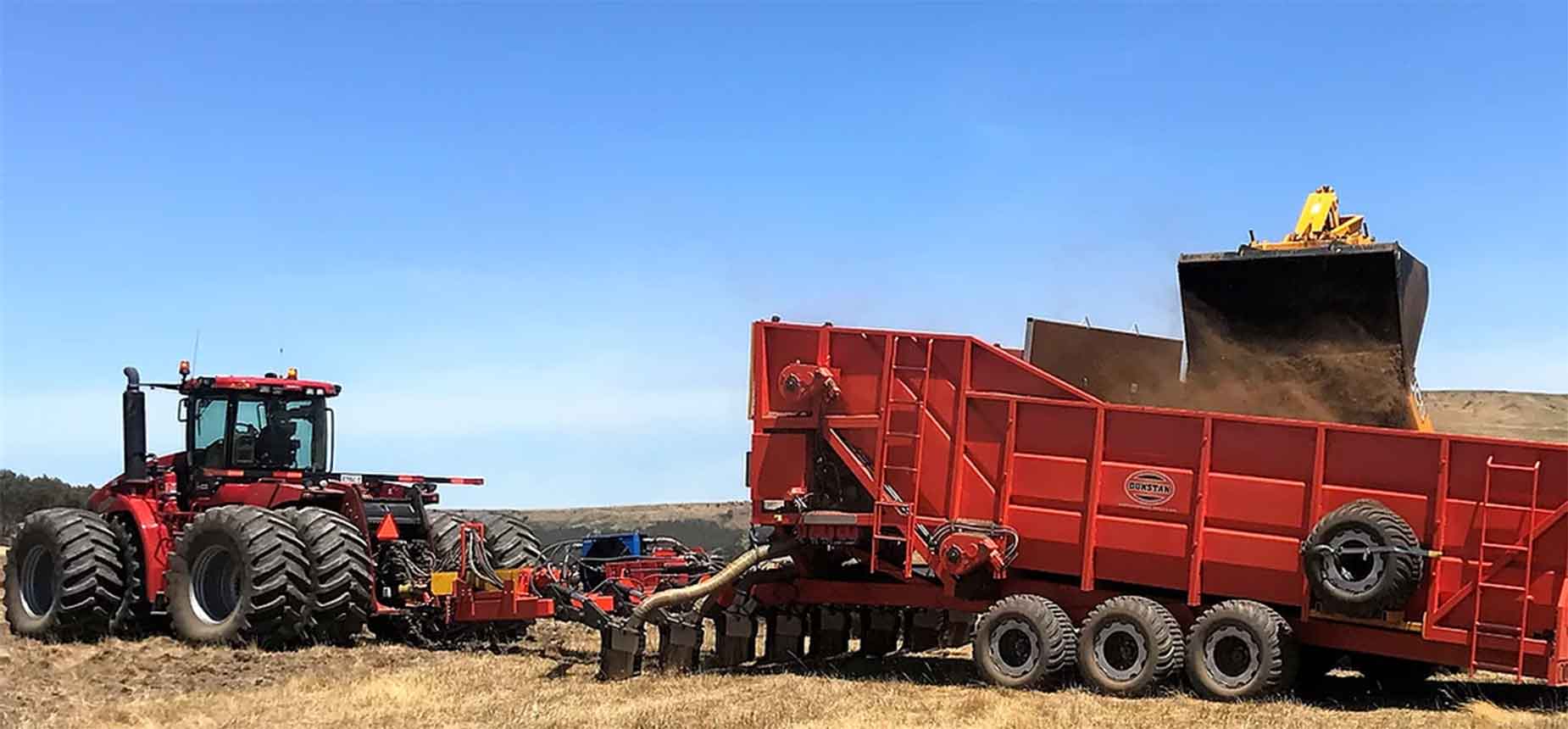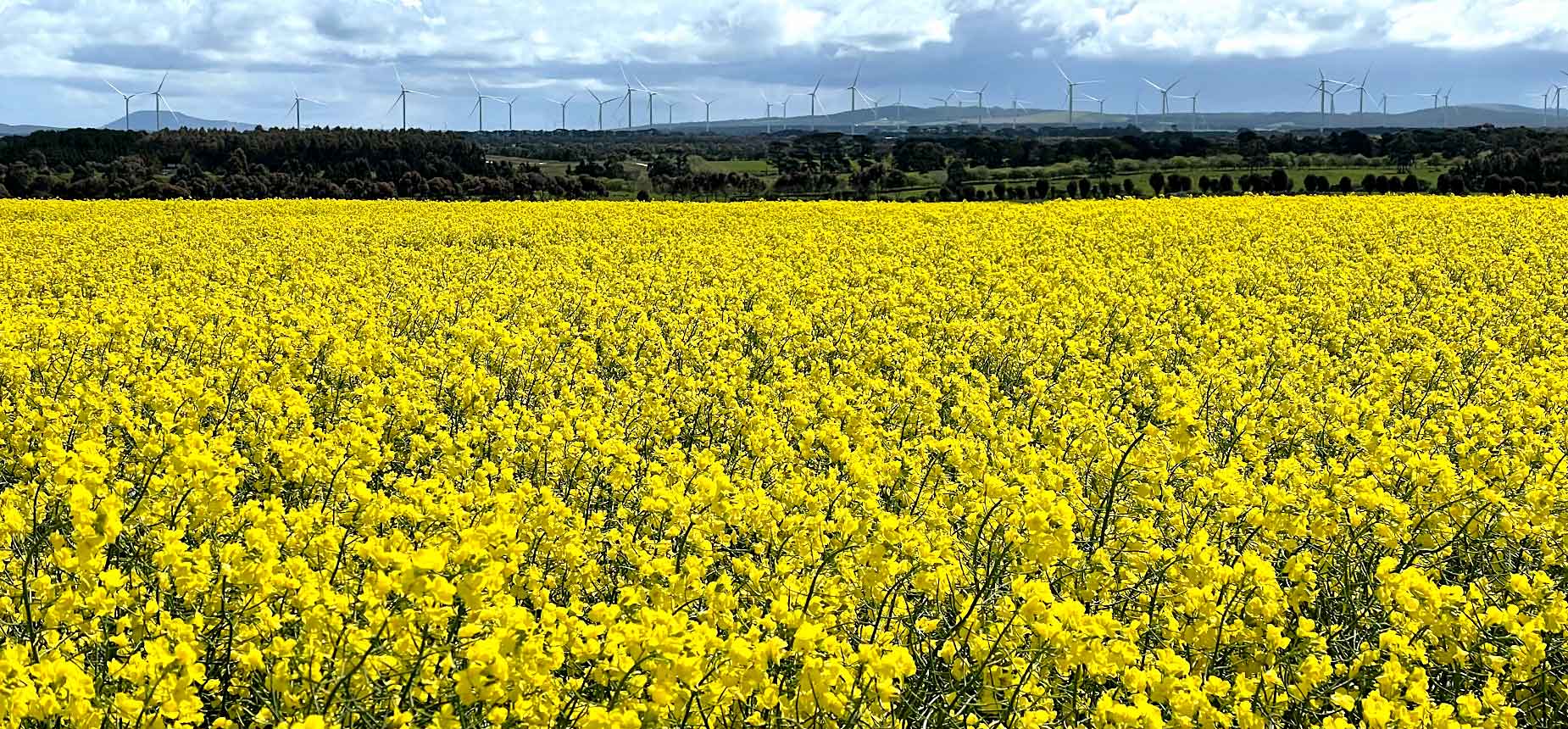THE ADOPTION OF SUBSOIL AMELIORATION
Terra Nova Ag’s experience in addressing subsoil constraints is founded on decades of experience in managing Yaloak Estate
Subsoil constraints
One of the main limitations for many cropping systems in Australia are subsoil constraints. Subsoil constraints penalise yield in both pasture and cropping systems by:
- increasing the risk of temporal waterlogging,
- reducing the availability of soil water and nutrients for plant uptake,
- reducing the efficiency of soil nutrition through imbalances in subsoil pH, and
- reducing root and biological activity due to the restrictive nature of the dispersed, compacted, poorly structured subsoils.
Terra Nova Ag’s experience in addressing subsoil constraints is founded on decades of experience in managing Yaloak Estate.
Yaloak Estate is a large broad-acre livestock and cropping operation located in Ballan in the high rainfall zone (HRZ) of Victoria (>500mm). The predominant soil type at Yaloak Estate is a duplex sodosol made up of a basalt clay-loam topsoil over heavy sodic clay. This soil type is prone to waterlogging and the highly dispersive nature of the subsoil inhibits root growth and therefore the availability of nutrients and subsoil water to plants.
Yaloak Estate began its investigation into how to realize the productive potential of the property 25 years ago. Cropping on raised beds in the 1990’s led to dramatic yield improvements, however we still were not capturing the full water use potential that the climate could deliver. Wheat crops reliably yielding 8-10t/ha was the goal.
Further research was undertaken from 2000, which identified hostile sodic subsoils as the major constraint.

HOSTILE SUBSOILS
In the early years of oilseed and cereal cropping at Yaloak Estate, yield penalties were often observed in a dry spring when crops began to suffer from heat and moisture stress.
The effect of a dry spring was amplified by the water requirements of heavy canopy crops that were grown in favourable cool growing conditions over autumn and winter. These seasons had no shortage of topsoil moisture and an abundant supply of mineralised nutrient from the fertile basalt loam topsoil.
Despite consistent topsoil moisture through winter and good soil nutrition, the poorly structured and dispersive subsoils meant that crops grown at Yaloak would often develop shallow root systems. The roots were not able to access water and nutrients in the subsoil. This was the most significant factor that was penalising yield at Yaloak.
The means of ameliorating these dispersive subsoils became the objective.

DEEP RIPPING
Deep ripping in dry conditions to maximise subsoil fracturing was implemented in an effort to improve the movement of air, water and plant roots through the subsoil. However, the effects were often only short lived as the dispersive nature of the subsoils would cause the newly open pore spaces to close over again within the first production year after ripping. Yield benefits from this practice were not often seen after the first twelve months. Surface applications of soil amendments like gypsum were used but were not effective in amending the subsoil which lies between 150-350mm below the surface.
RESEARCH INTO SUBSOIL AMELIORATION
Our efforts were then directed to investigating new ways in which to improve the structure and water holding capacity of our subsoils. In 2005, Yaloak commenced a three-year Australian Research Council linkage program with an Assoc. Prof. of La Trobe University to investigate ways of improving the performance of hostile subsoils.
The results of the research were outstanding with yield increases ranging between 55% - 70% over three years. These results gave great encouragement to pursue the application of the practice and the development of machinery capable of injecting high volumes of organic material to a depth of 400mm on commercial sized areas.

LARGE SCALE ADOPTION OF SUBSOIL AMELIORATION
Yaloak began its first paddock scale applications of subsoil amelioration (SSA) in 2013. Amelioration of the first paddock concluded in 2013 and the paddock was sown to canola. The yield increase on control was 80% over 60ha.
The results from the 2013 canola crop encouraged Yaloak to begin a large-scale SSA program covering some 500 ha on its Ballan property from 2014-2015. This was the first time that SSA had been conducted on such a large scale.
The 2014 and 2015 seasons were exceptionally dry years with minimal subsoil water and very hot conditions during grain fill. The expectation of the significant yield increases that were seen previously in smaller trial plots were not met in the first two years post treatment at Yaloak, largely due to the significant lack of rainfall.
Although many of the earlier small plot trials indicated possible yield increases of 55%-70%, Yaloak has observed the yield advantage of broadacre applications to be consistently within in the range of 20%-45%. This is due to a variety of factors that do not often affect small plot trials such as drainage impediments, spatial distribution of frost, hail and crop lodging resulting from damaging rainfall.
One of the main factors affecting the performance of SSA is the spatial distribution of subsoil dispersion. This was not very well understood at the time when the large areas were treated in 2014-2015.

Over time, SSA has been proven to increase grain yield and dry matter production in crop and pasture systems at Yaloak Estate. The findings of numerous research projects both on and off farm have improved our understanding of the mechanisms driving the yield response we are seeing in our soils. These findings are becoming the catalyst for a changed approach to subsoil amelioration, including targeted applications of subsoil amendments based on the known distribution of dispersive subsoils mapped by EM38 and historical yield maps.
The adoption of SSA as a practice has required significant input from the business both in the development of prototype machinery and facilitating and participating in inhouse and industry research trials.
While the research and development continues into improving methods to address the many and varied subsoil constraints, SSA using high rates of organic amendments injected into the interface of topsoil and subsoil has delivered many of the gains we had hoped for at Yaloak Estate.
Terra Nova Ag now has the machinery and expertise to ameliorate subsoil constraints on a large scale for clients. Contact us today to discover ways we can help you improve production.
